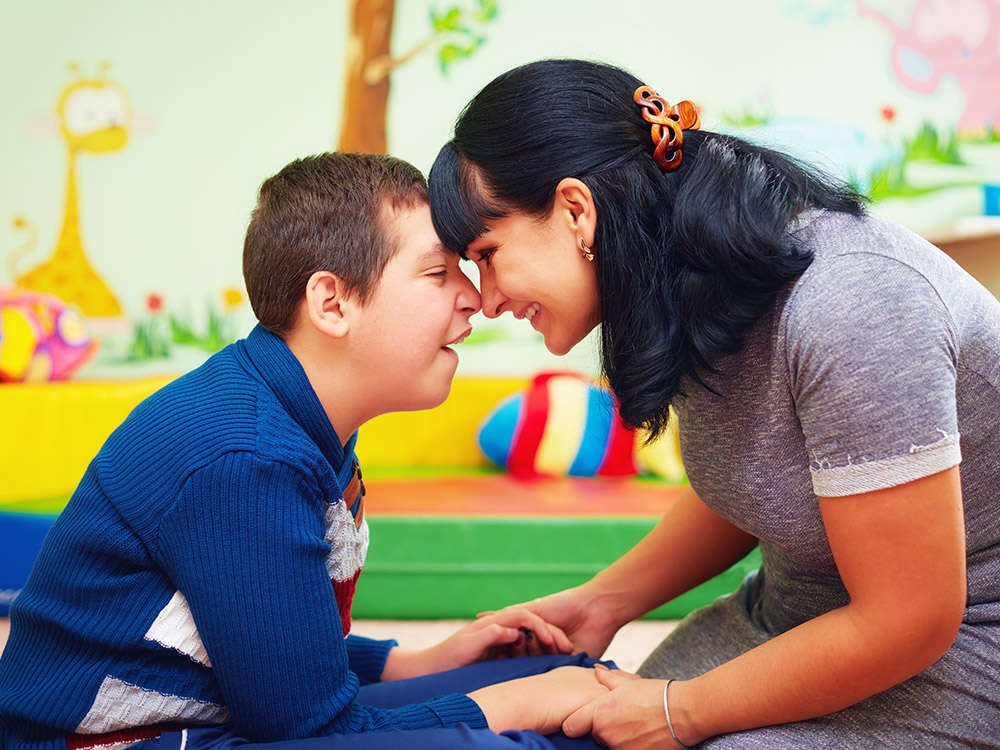Exactly How to Interact Successfully with Liked Ones on the Autism Spectrum
Exactly How to Interact Successfully with Liked Ones on the Autism Spectrum
Blog Article
Discovering Autism: Approaches for Effective Communication and Interaction
Efficient communication and communication with individuals on the autism range require a detailed understanding of their distinct demands and choices. The complexities of these strategies expose further factors to consider that merit expedition, particularly in just how they can be adapted to varied contexts and individual experiences.
Recognizing Autism Spectrum Problem
Autism Spectrum Problem (ASD) incorporates a variety of neurodevelopmental conditions identified by challenges in social communication, communication, and repeated actions. The term "spectrum" shows the varied manifestations and differing levels of severity experienced by people with ASD. While some might exhibit considerable problems, others may display high-functioning attributes, enabling higher freedom in day-to-day live.
The onset of ASD commonly occurs in early youth, with indicators often identifiable by age 2. Very early indicators may include delayed speech growth, minimal eye contact, and difficulties in comprehending social hints. Although the precise etiology of ASD remains uncertain, research study recommends a mix of hereditary and ecological variables plays an important duty in its development.
As an outcome, interventions and assistance customized to private needs are important for fostering interaction and social skills. Recognizing the intricacy of ASD is vital for advertising understanding, approval, and efficient strategies that promote meaningful communications with individuals on the range.

Importance of Clear Interaction
Reliable interaction is important for fostering understanding and link, specifically for people with Autism Spectrum Disorder (ASD) Clear interaction not just helps with social interactions yet additionally improves the individual's capacity to share their demands, ideas, and emotions. For individuals with ASD, the subtleties of language can typically be testing; as a result, using unambiguous and simple language is important.
Moreover, clear interaction helps in reducing disappointment and anxiety that might occur from misunderstandings. When messages are communicated in a consistent and direct fashion, individuals with ASD are much better geared up to analyze information precisely, which can considerably boost their social engagement and involvement in numerous settings.
Developing regimens and using aesthetic assistances can even more strengthen clear communication. These methods provide individuals with foreseeable structures that aid understanding and retention of details. Additionally, proactively paying attention and being client throughout communications promotes a helpful atmosphere where people with ASD feel valued and comprehended.
Inevitably, focusing on clear communication not only equips people with ASD yet also fosters more significant links with their peers, caretakers, and the wider neighborhood, leading the way for inclusive communications and collective partnerships. - autism
Non-Verbal Communication Techniques
Communication extends beyond words, and for individuals with Autism Spectrum Condition (ASD), non-verbal hints play a substantial duty in communications. Non-verbal interaction strategies can consist of faces, motions, body movement, and eye call, every one of which work as crucial parts for sharing feelings and intents.
Comprehending and translating these non-verbal signals can improve communications with individuals with ASD. A warm smile or open posture can create an inviting ambience, urging interaction. Likewise, using aesthetic help-- such as photo cards or symbols-- can bridge communication voids and aid share messages a lot more successfully.
It is likewise essential to be conscious of individual area, as individuals with ASD might have different convenience levels concerning closeness. Observing their responses to physical closeness can educate proper modifications.

Creating Encouraging Atmospheres
Creating a supportive setting is vital for promoting positive communications and enhancing the health of individuals with Autism Spectrum Problem (ASD) Such atmospheres can More Bonuses significantly lower stress and anxiety and create a feeling of safety, permitting individuals to share themselves much more openly.
To accomplish this, it is necessary to take into consideration sensory sensitivities that people with ASD may experience. Changing the physical area to consist of soft illumination, marginal background sound, and comfortable seating can develop a calming ambience. Additionally, making use of consistent regimens and clear aesthetic schedules can aid individuals expect changes and decrease unpredictability, more promoting convenience.
Social spaces ought to be structured to decrease overwhelming stimulations while providing chances for involvement in preferred activities. Promoting areas assigned for peaceful time can additionally serve as a sanctuary throughout minutes of tension. Significantly, including elements of option equips people, allowing them to exercise company in their setting.

Motivating Social Interactions
Promoting social interactions amongst individuals with Autism Spectrum Problem (ASD) needs intentional approaches that prioritize convenience and interaction. Developing predictable regimens can help in reducing anxiety, making social setups more friendly. Creating organized environments with specified roles and duties enables people to involve without the overwhelming stress of unstructured social characteristics.
Integrating passions and strengths find this right into social activities can work as a catalyst for communication. Arranging team activities around shared hobbies or topics of attraction can promote all-natural discussions and connections. Additionally, using visual assistances, such as photographic timetables or social scripts, can aid in comprehending social hints and assumptions.
Modeling ideal social habits is vital - autism. Peers and adults need to demonstrate effective communication techniques, including active listening and turn-taking. Role-playing situations can also offer a risk-free area for individuals to practice these skills
Lastly, fostering peer relationships via comprehensive techniques is crucial. Urging comprehensive playdates or team trips can create opportunities for socialization in a comfy setup. By carrying out these approaches, caretakers and teachers can significantly boost social interactions for individuals with ASD, advertising their general social development and health.
Verdict
To conclude, effective interaction and communication methods are important for sustaining individuals with Autism Range Disorder. Highlighting clear language, incorporating non-verbal cues, and developing predictable regimens significantly improve involvement and decrease anxiousness. Creating helpful settings fosters risk-free social communications, while encouraging shared passions facilitates significant links. Ultimately, these techniques encourage people with autism to navigate social landscapes, promoting their general health and enabling the advancement of long-term relationships.
Efficient interaction and communication with people on the autism range demand a thorough understanding of their unique needs and preferences. Clear communication not only facilitates social interactions but also enhances the individual's ability to express their ideas, requirements, and emotions.Fostering social communications among individuals with Autism Range Problem (ASD) calls for deliberate techniques that prioritize comfort and Click This Link involvement. By applying these caretakers, teachers and strategies can considerably enhance social communications for individuals with ASD, advertising their general social development and health.
In final thought, effective interaction and interaction strategies are crucial for supporting people with Autism Range Disorder.
Report this page